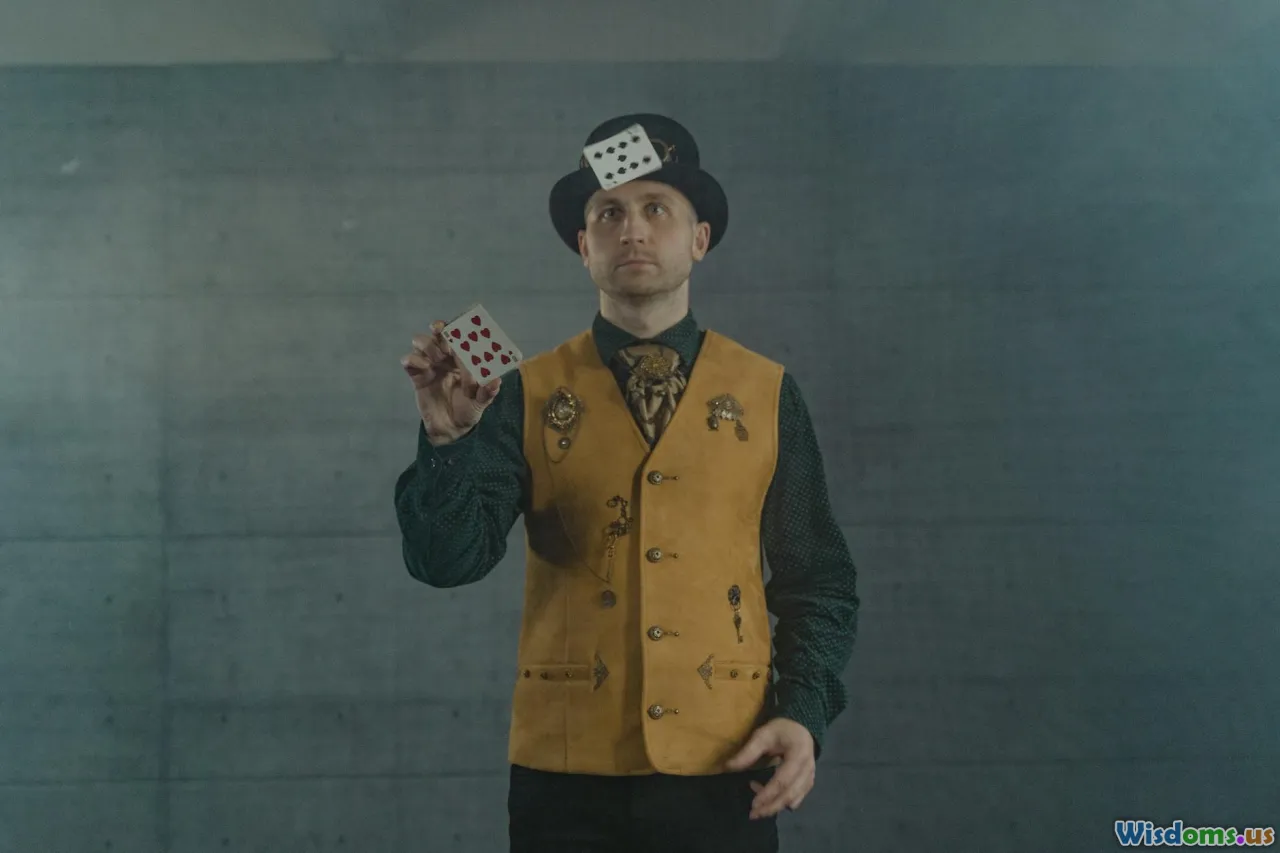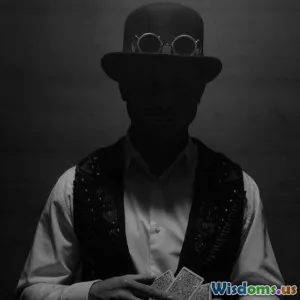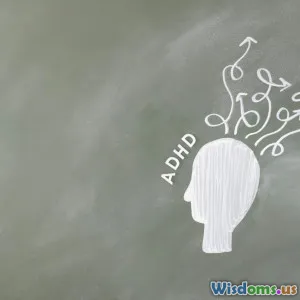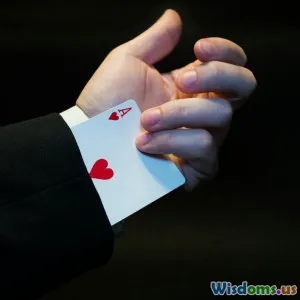
Famous Illusions That Stunned Audiences
8 min read Discover iconic illusions that mesmerized spectators and shaped the art of magic and stage mysteries throughout history. (0 Reviews)
Famous Illusions That Stunned Audiences: The Artistry Behind the Magic
Magic has long enthralled audiences by bending reality and defying the laws of nature. But some illusions transcend mere tricks—they leave spectators breathless, questioning everything they thought possible. From daring escapes to jaw-dropping visual feats, these illusions have shaped the magical arts and captivated global stages for over a century. In this article, we journey through some of the most famous illusions that stunned audiences, revealing the secrets behind the spectacle and their profound cultural impact.
The Spellbinding Beginnings: Escape Artists and Dangerous Feats
One cannot discuss famous illusions without honoring Harry Houdini—often hailed as the King of Escape. Starting in the early 1900s, Houdini's performances broke the mold by showcasing raw bravery coupled with intricate trickery. His escapes from handcuffs, straightjackets, underwater tanks, and even buried coffins weren’t mere contributions to magic; they were transformations of theatrical danger itself.
The Chinese Water Torture Cell
Among Houdini’s feats, the Chinese Water Torture Cell remains iconic. Lowered upside down into a locked glass-and-steel tank filled with water, Houdini was shackled as seconds ticked by. The illusion thrilled because of its seemingly impossible danger compounded by the trap's transparent design—audiences could watch the struggle with mounting anxiety. Though the exact methodology remains a guarded secret, the illusion's legacy lies in its perfect balance of suspense and showmanship.
"Houdini’s brilliance was not just his escapes but in making us believe he was defying death." - Magician Penn Jillette
This illusion set standards for future magicians: to build tension, use genuine peril, and engage audiences emotionally.
Vanishing Acts and Impossible Appearances
Disappearing acts and levitations have fascinated audiences as they challenge perception itself. Among these, David Copperfield’s illusions stand out as monumental milestones.
The Statue of Liberty Disappearance (1983)
Copperfield's vanishing of the Statue of Liberty ranks among the most elaborate illusions ever broadcast. Relying on lighting, moving platforms, and strategic angles, the illusion gave television audiences a front-row seat to the impossible. It was not simply a trick; it was an event that united millions in awe and disbelief.
The performance’s impact was profound, blurring the lines between technology and magic. Copperfield utilized the era’s media reach to popularize illusions on an unprecedented scale, paving the way for modern televised magic shows.
Deceptive Perspectives: Optical Illusions on Stage
Illusions don't always rely purely on props and setups. Some, like the famous Ames Room illusion, manipulate perception through clever architectural design.
The Ames Room Illusion
Developed by American ophthalmologist Adelbert Ames Jr. in 1946, the Ames Room is constructed to appear normal though its walls and floor are irregularly shaped. Standing inside, two people appear to tremendously change size relative to each other as they walk from corner to corner. This optical illusion exploits the brain’s assumptions about perspective, providing an otherworldly experience.
Stage magicians have harnessed such perceptual quirks to supplement their tricks, weaving neurological principles into their performances. Audience members leave not just entertained but marveling at how human perception can be challenged in simple yet profound ways.
Classic Card and Coin Illusions: The Intimate Wonders
Beyond spectacle, magic thrives in intimacy—close-up illusions form the backbone of that enduring charm. Consider the sleight of hand pioneered by Dai Vernon, regarded as the "Professor" of magic.
Dai Vernon’s Ambitious Card
Veron’s masterpiece, known as the Ambitious Card, features a playing card repeatedly rising to the top of the deck regardless of being shuffled and placed deeper within. The routine combines dexterity, timing, and a touch of misdirection so flawlessly that it continues to inspire magicians globally.
Close-up illusions, unlike grand stage feats, engage personal wonder by connecting directly with the observer. Such magic reminds us of human skill and the subtle artistry behind the magic.
Psychological Illusions: Mind Tricks and Cognitive Misdirection
Some illusions operate less on physical deception and more on influencing the mind itself.
The Invisible Gorilla Experiment and Magic
While not a stage illusion, the Invisible Gorilla experiment conducted by Daniel Simons and Christopher Chabris (1999) provides invaluable insight into selective attention. They famously showed how people can overlook a gorilla walking through a basketball game when focused elsewhere.
Magicians expertly exploit these cognitive blind spots during performances, guiding attention away from the method while revealing the "impossible" outcome. Thus, magic is often psychology as much as technique.
Mentalist Derren Brown relates, "Understanding human psychology allows me to create illusions rooted in what my audience isn’t seeing rather than what I’m doing."
Conclusion: The Enduring Magic of Illusions
Famous illusions have done more than entertain; they have continuously expanded our understanding of perception, psychology, and performance art. From Houdini’s breath-taking escapes to Copperfield’s transformative spectacles, from architectural trickery in an Ames Room to intimate sleight-of-hand masters, these illusions enrich culture, inspire wonder, and demonstrate profound human creativity.
The success of these illusions lies not in mere deception but in the art of storytelling, engaging our curiosity, fears, and amazement. They invite us to question what we see and to marvel at what may lie just beyond the edge of perception. As long as curiosity endures, the magic of famous illusions will continue to stun and inspire audiences around the world.
References
- Tang, WC. Houdini's Legacy: The Art of the Escape. Magic Publications, 2015.
- Copperfield, D. Magic Man: Behind the Illusions. HarperCollins, 2007.
- Simons, DJ, Chabris, CF. (1999). The Invisible Gorilla: And Other Ways Our Intuitions Deceive Us. Crown Publishers.
- Lamont, P. Sleights of Mind: What the Neuroscience of Magic Reveals About Our Everyday Deceptions. University Press, 2016.
Rate the Post
User Reviews
Popular Posts



















